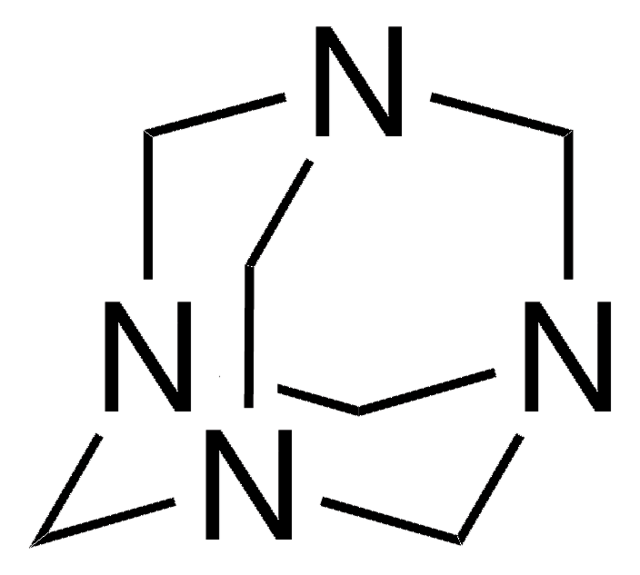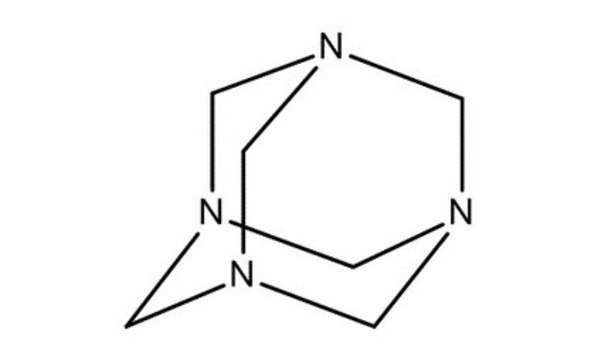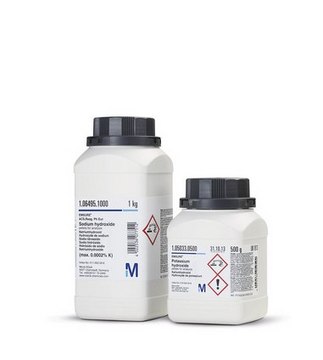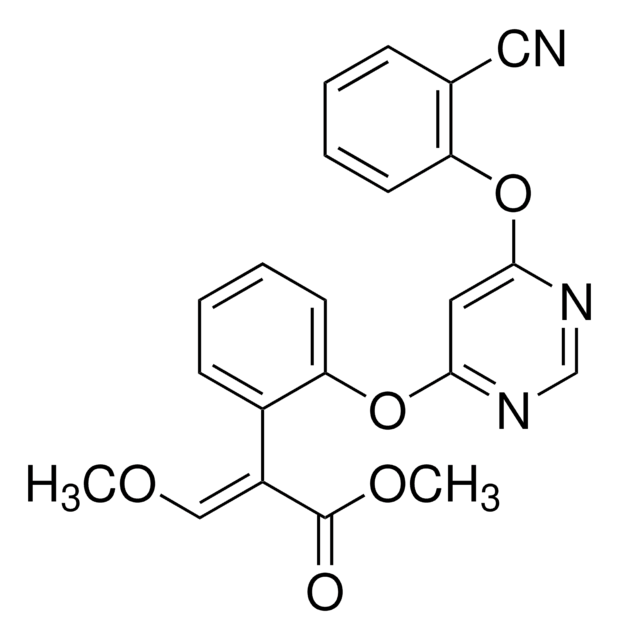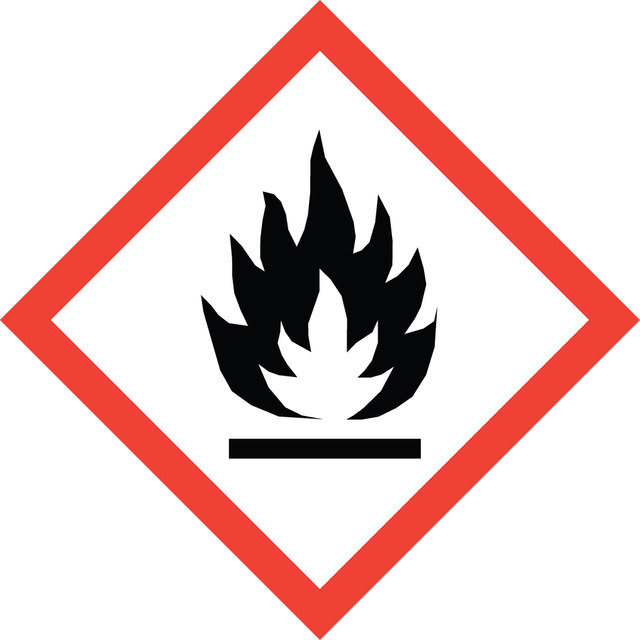33233
Hexamethylenetetramine
puriss. p.a., reag. Ph. Eur., ≥99.5% (calc. to the dried substance)
Synonym(s):
1,3,5,7-Tetraazatricyclo[3.3.1.13,7]decane, Hexamine, Methenamine, Urotropine
Select a Size
Select a Size
About This Item
Recommended Products
Agency
USP/NF
reag. Ph. Eur.
Quality Level
vapor pressure
<0.01 mmHg ( 20 °C)
grade
puriss. p.a.
Assay
≥99.5% (calc. to the dried substance)
form
solid
autoignition temp.
770 °F
impurities
≤0.001% heavy metals (as Pb)
≤0.01% ammonium (NH4)
ign. residue
≤0.01% (as SO4)
pH
8.5-9.5 (20 °C, 10%)
Looking for similar products? Visit Product Comparison Guide
General description
Application
It has been used for the preparation of ceria nanoparticles, via precipitation method.[3]
Signal Word
Warning
Hazard Statements
Precautionary Statements
Hazard Classifications
Flam. Sol. 2 - Skin Sens. 1B
Storage Class Code
4.1B - Flammable solid hazardous materials
WGK
WGK 1
Flash Point(F)
482.0 °F - closed cup
Flash Point(C)
250 °C - closed cup
Personal Protective Equipment
Regulatory Information
Choose from one of the most recent versions:
Already Own This Product?
Find documentation for the products that you have recently purchased in the Document Library.
Our team of scientists has experience in all areas of research including Life Science, Material Science, Chemical Synthesis, Chromatography, Analytical and many others.
Contact Technical Service